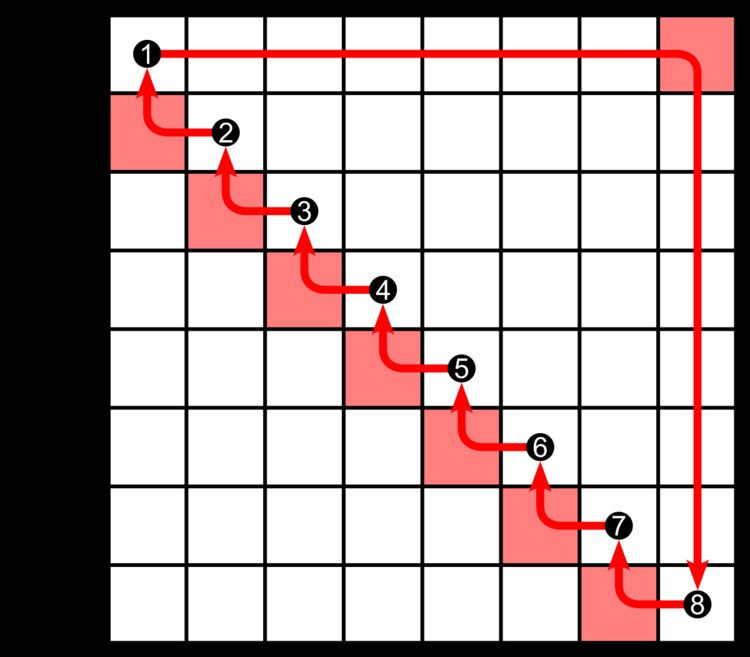 | ||
In combinatorial mathematics, a circular shift is the operation of rearranging the entries in a tuple, either by moving the final entry to the first position, while shifting all other entries to the next position, or by performing the inverse operation. A circular shift is a special kind of cyclic permutation, which in turn is a special kind of permutation. Formally, a circular shift is a permutation σ of the n entries in the tuple such that either
Contents
or
The result of repeatedly applying circular shifts to a given tuple are also called the circular shifts of the tuple.
For example, repeatedly applying circular shifts to the four-tuple (a, b, c, d) successively gives
and then the sequence repeats; this four-tuple therefore has four distinct circular shifts. However, not all n-tuples have n distinct circular shifts. For instance, the 4-tuple (a, b, a, b) only has 2 distinct circular shifts. In general the number of circular shifts of an n-tuple could be any divisor of n, depending on the entries of the tuple.
In computer programming, a circular shift (or bitwise rotation) is a shift operator that shifts all bits of its operand. Unlike an arithmetic shift, a circular shift does not preserve a number's sign bit or distinguish a number's exponent from its significand (sometimes referred to as the mantissa). Unlike a logical shift, the vacant bit positions are not filled in with zeros but are filled in with the bits that are shifted out of the sequence.
Implementing circular shifts
Circular shifts are used often in cryptography in order to permute bit sequences. Unfortunately, many programming languages, including C, do not have operators or standard functions for circular shifting, even though virtually all processors have bitwise operation instructions for it (e.g. Intel x86 has ROL and ROR). However, some compilers may provide access to the processor instructions by means of intrinsic functions. In addition, it is possible to write standard ANSI C code that compiles down to the "rotate" assembly language instruction (on CPUs that have such an instruction). Most C compilers recognize the following idiom, and compile it to a single 32-bit rotate instruction.
This safe and compiler-friendly implementation was developed by John Regehr, and further polished by Peter Cordes
For C++, the use of templates can expand the support to all integer types:
Example
If the bit sequence 0001 0111 were subjected to a circular shift of one bit position... (see images below)
If the bit sequence 1001 0110 were subjected to the following operations:
Applications
Cyclic codes are a kind of block code with the property that the circular shift of a codeword will always yield another codeword. This motivates the following general definition: For a string s over an alphabet Σ, let shift(s) denote the set of circular shifts of s, and for a set L of strings, let shift(L) denote the set of all circular shifts of strings in L. As already noted, if L is a cyclic code, we have L = shift(L). The operation shift(L) has been studied in formal language theory. For instance, if L is a context-free language, then shift(L) is again context-free. Also, if L is described by a regular expression of length n, there is a regular expression of length O(n³) describing shift(L).
